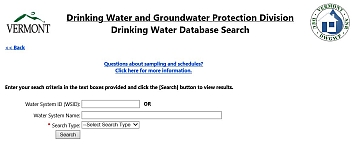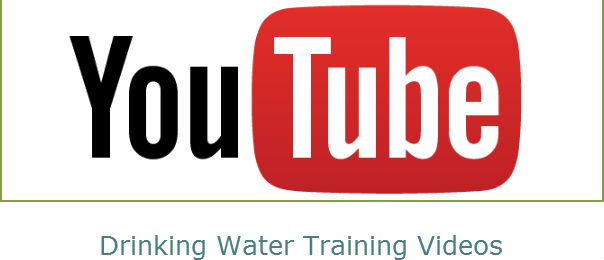The term radionuclide refers to the following regulated drinking water contaminants under the federal Radionuclide Rule (CFR Part 141) and Vermont Water Supply Rule.
- Uranium
- Combined Radium -226 and -228
- Gross Alpha Particle Activity
Certain rock types in Vermont contain naturally occurring radionuclides which can break down or decay over many years and make their way into drinking water. The radioactive decay process releases energy that is measured as gross alpha radiation.
Community Water Systems are required to routinely monitor for radionuclides. NTNC (Non-Transient Non-Community) Water Systems are required to perform some initial monitoring which will then dictate the need for future monitoring. The sampling frequency for radionuclides is based on the concentration of the contaminant present. The range in frequency can be from quarterly, annually, once every 3 years, once every 6 years, or once every 9 years. Additional radionuclide monitoring may be required for systems that are deemed vulnerable by the Division.
Through work with the Department of Health, Vermont has established a Maximum Contaminant Level (MCL) in drinking water for uranium which is more stringent than the federal MCL in order to better protect public health. Vermont's Uranium MCL is 20 micrograms per liter, while the federal MCL is 30 micrograms per liter (ug/L). Consumption of drinking water containing uranium greater than 20 ug/L could have adverse short-term health effects and can lead to an increased risk of kidney toxicity. A confirmed finished water uranium sample result above the Vermont MCL of 20 ug/L, requires an immediate Do Not Drink notice. Compliance with the Vermont MCL is determined by Running Annual Average (RAA).
Compliance samples for all radionuclides must be taken at the entry point to the distribution system, following all treatment and storage and at or before the first tap/user in distribution.
Refer to the Chemical Sampling Frequency Table for more details on chemical and radionuclide monitoring requirements.
What do I do if my water contains elevated levels of these contaminants?
An exceedance of the MCL for any of the regulated chemical and radionuclide contaminants requires the water system to develop a plan and schedule to explore options which typically require the system to either treat or abandon the drinking water source. This plan will likely require hiring a consulting engineer and submittal of a new source permit application and/or construction permit for additional infrastructure. The water system must first obtain a permit from the Division when there is a change to the quality and/or quantity of the drinking water served before any work is done.
Additional treatment options and health effect information is available from the Vermont Department of Health’s website.


